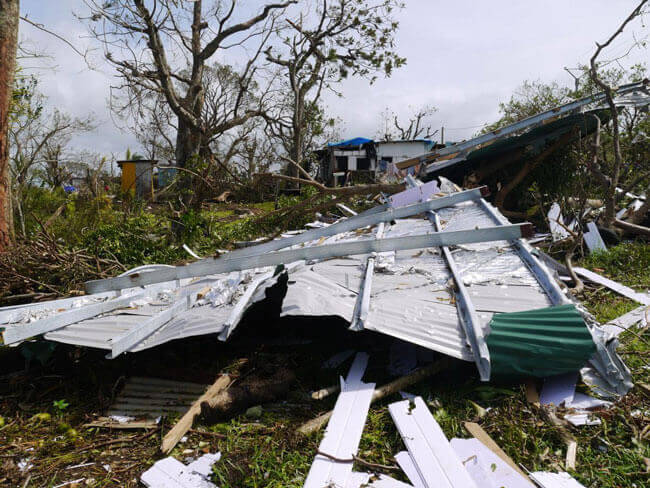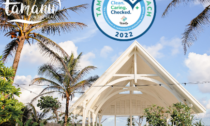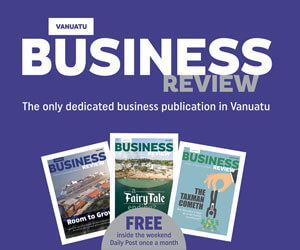Economic review post Cyclone Pam
January 29, 2020 8:00 am | Posted in Features | Share now TwitterFacebook

The category 5 Cyclone Pam hit Vanuatu in March 2015. This was the biggest cyclone since Uma to have such a destructive effect on the nation.
Over the years since the disaster, we can see the people have recovered and continued with their lives. That is on a personal basis and results to vary between individuals.
On a national level we ask the big questions, how have businesses coped since Pam and has the economy recovered over the past five years . In addition to Pam, the problems with the Airport Runway in the following year also contributed to the downturn in the economy. The Vanuatu Business Review has looked back and made assessments on areas such as tourism, foreign investment, Government VAT collections and imports through container volumes to determine whether our economy has recovered.
Foreign investment
Foreign investment is a major contributor to our economy; however, Vanuatu’s geographical location makes it very vulnerable to natural disasters such as tropical cyclones, earthquakes, tsunamis and volcanic eruptions. This could have some effects on trust and confidence from potential investors thinking of investing in our nation.
The VBR spoke to Alick Robsen Joe, an investment promotion officer from the Vanuatu Investment Promotion Authority [VIPA], who advised that there were 137 new investment projects approved in 2015. The following year 2016 saw a slight rise to 158 followed by 167 in 2017. 2018 however saw a slight drop to 156 followed by another rise in 2019 to 176 which is the highest since Pam.
Mr Joe says in 2019 alone, numbers of new projects reached 176. A proposed employment opportunity of 1577 was recorded last year and this is very important, as it is line with the VNSP 2030 with relevance to workforce supporting the grassroots level. This includes increasing investment opportunities to support the growth of the Vanuatu’s economy. Sectors contributing to the highest number of foreign direct investments [FDI]’s in 2019 are in the order from the highest, wholesale & Retail Trade, Accommodation and Food Service Activities (Tourism), Professional, Scientifi c and Technical Activities and Manufacturing.
2019 recorded the highest numbers of approval compared to the previous years. Major indicators supporting the economic growth is Tourism, Wholesale & Retail Trade, ICT and Manufacturing. Agriculture is one the biggest sector in Vanuatu and with VFIPA, through its facilitation role, is encouraging investment within this sector. Many of the investment opportunity is carried out in the capital city-Port Vila followed by Luganville- Espiritu Santo.
Mr Joe further explains that FDI increases competition, productivity, innovation, creating a positive effect supporting the country as a whole. Three markets that continuous to shows major interest in the investment opportunity in Vanuatu is China, Australia and New Zealand. China dominates the list of incoming FDI’s in the year 2018 followed by Australia and New Zealand. A strong performance ensured China maintains its similar trend for the year 2019. This put a competitive pressure on Australia that continuous to secure second place in two years. It enhances the competitiveness of other markets, particularly New Zealand in securing the third place.
Tourism
Tourism also plays a major part on the national economy as Vanuatu relies heavily on tourism which is the nation’s major income earner, however similar to investor trust, a natural disaster could also have a negative effect on tourism. Pam had some destructive effects on a few tourist spots and tourism related businesses. The following year, Air New Zealand cancelled flights to Vanuatu due to concerns with the Runway and have not returned. The concerns on the runway also affected code sharing between Air Vanuatu and Qantas further compounding the Tourism sector problems.
In a report from the Vanuatu National Statistics Office [VNSO] the visitor numbers recorded by the Immigration Department for 2015 when Pam hit us dropped to 63,625 from 86,239 in 2014. 2016 the number increased to 71,088 and further increased to 83,465 in 2017. 2018 showed another increase to 91,726. 2019 showed tourist numbers sit at 31,276 in the months from January to May.
The number of tourists travelling to the outer islands also increased between 2015 which saw a total of 20,223 to 31,107 visitors visiting our islands. Out of the other islands excluding Efate, Santo had the most visitors from 2015 to May 2019 which saw a total of 39,717 visitors.
Imports
Good and Services Sector
Vanuatu imports more than it exports and usually imports things such as food and manufactured goods ranging from household items to machinery.
VBR contacted Ifira Ports and Development and spoke with Manu To’omalatai Laban, Operations Superintendent of IPDS. He advised that the 2014/15 financial year when Cyclone Pam came, saw a total of 6,853 shipping containers arrive in Port Vila. The 2015/16 financial year saw 7,727 container arrivals followed by 8,960 containers in 2016/17 with a further increase to 9,302 containers in 2017/18. However, there was a drop in the following financial year which saw 2018/19 having 7,931 containers arriving. Whilst we have not been able to separate the volume of containers that has been directly related to infrastructure projects in the years 2016/2107/2018, there is clear indication that the volumes of merchandise imported in to Vanuatu has suffered declines.
In general, looking at the economy from different angles we can see that the national economy has recovered slowly since Cyclone Pam and is slowly growing in a few areas and decreasing in a few.
Join us for next month’s edition for part 2 where we will look in to VAT revenue collections, and the Financial services sector.










